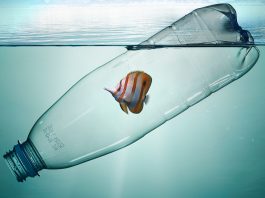Researchers at the Norwegian University of Science and Technology are working to create a model that will tackle the problem of plastic in the ocean, showing where it collects and where it comes from.
Around the world, eight million tonnes of plastic end up in the ocean every year, despite efforts towards recycling and awareness of disposable plastics.
Christina Hellevik, one of the researchers at the Norwegian University of Science and Technology (NTNU), commented: “Actions to clean up plastic don’t do much good if you don’t deal with the sources of the plastic at the same time.”
The goal for the researchers, who are collaborating with the Ålesund region’s Port Authority, Ålesund municipality and Møre og Romsdal county, is to develop more targeted measures for the clean-up and collection of waste.
“One of the things we’re developing is an app that recognises plastic from an image,” said Hellevik. “When you’re out cleaning up marine waste, you photograph the plastic objects you find with your mobile and register the product in the app.”
Previously, clean-up operations have weighed and photographed the waste afterwards, without being able to register it in detail and efficiently.
The researchers are also developing a database for the app, which will be tested by around 100 people when they are at clean-up actions in the future.
“The technology will become widely available starting in the spring of 2022, and anyone will be able take a picture of plastic articles and get information,” said Ricardo Da Silva Torres, the professor who is responsible for the technical tool. “People will also need to register where the object was found,” he added.
The researchers have developed the app with the aim of helping to predict which areas attract plastic pollution and where its origins are. As well as this, they hope it will help facilitate decision-making for the municipality and the port authority.
Clean-up events show that the sources of plastic in the Ålesund region often tend to be materials from fish farms, industrial areas or boats.
Through PlastOPol, NTNU will collaborate with the Ålesund region’s Port Authority, Møre og Romsdal county and Ålesund municipality to develop a prediction model based on plastic in the oceans. The Research Council of Norway is supporting the project.





